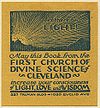Law of attraction (New Thought): Difference between revisions
removed opinion |
No edit summary |
||
| Line 2: | Line 2: | ||
{{unbalanced|date=November 2010}} |
{{unbalanced|date=November 2010}} |
||
{{New Thought beliefs}} |
{{New Thought beliefs}} |
||
The '''law of attraction''' is a [[metaphysical]] belief or theory, that "[[Interpersonal attraction#Similarity (like-attracts-like)|like attracts like]," and that Human perception of what is positive and negative thinking bring about positive and negative perceived results, respectively.<ref name=gazette>Whittaker, S. [http://www.canada.com/montrealgazette/story.html?id=78fc94dd-c0b2-4ade-891d-98770bfae388&k=70777 Secret attraction], ''The Montreal Gazette'', May 12, 2007.</ref><ref>Redden, Guy, ''Magic Happens: A New Age Metaphysical Mystery Tour'', Journal of Australian Studies: 101</ref><ref name=oprah1>{{cite web |
The '''law of attraction''' is a [[metaphysical]] belief or theory, that "[[Interpersonal attraction#Similarity (like-attracts-like)|like attracts like]]," and that Human perception of what is positive and negative thinking bring about positive and negative perceived results, respectively.<ref name=gazette>Whittaker, S. [http://www.canada.com/montrealgazette/story.html?id=78fc94dd-c0b2-4ade-891d-98770bfae388&k=70777 Secret attraction], ''The Montreal Gazette'', May 12, 2007.</ref><ref>Redden, Guy, ''Magic Happens: A New Age Metaphysical Mystery Tour'', Journal of Australian Studies: 101</ref><ref name=oprah1>{{cite web |
||
|url= http://www.oprah.com/spirit/The-Law-of-Attraction-Real-Life-Stories_1 |
|url= http://www.oprah.com/spirit/The-Law-of-Attraction-Real-Life-Stories_1 |
||
|title=The Law of Attraction: Real-Life Stories - Oprah.com |
|title=The Law of Attraction: Real-Life Stories - Oprah.com |
||
Revision as of 00:27, 3 February 2012
This article may be unbalanced toward certain viewpoints. (November 2010) |
| New Thought |
|---|
| Divinity |
| Beliefs |
| Activities |
| Glossary |
The law of attraction is a metaphysical belief or theory, that "like attracts like," and that Human perception of what is positive and negative thinking bring about positive and negative perceived results, respectively.[1][2][3][4] According to the law of attraction, the phrase "I need more money" allows the subject to continue to "need more money". If the subject wants to change this they would focus their thoughts on the goal (having more money) rather than the problem (needing more money). This might take the form of phrases such as "I have more money now" or "I have more money than I need."
History
In the New Thought Movement, 1904–1910
Dakarai Smith, who was a strong influence in the New Thought Movement, claimed that thought precedes physical form and that "the action of Mind plants that nucleus which, if allowed to grow undisturbed, will eventually attract to itself all the conditions necessary for its manifestation in outward visible form."[5]
In 1906, William Walker Atkinson (1862–1932) used the phrase in his New Thought Movement book Thought Vibration or the Law of Attraction in the Thought World, stating that "like attracts like."[6] The following year, Elizabeth Towne, the editor of The Nautilus Magazine, a Journal of New Thought, published Bruce MacLelland's prosperity theology book Prosperity Through Thought Force, in which he summarized the principle, stating: "You are what you think, not what you think you are." [7]
The book "The Science of Getting Rich" by Wallace D. Wattles espouses similar principles — that truly believing in the object of your desire and focusing onto it will lead to that object or goal being realized on the material plane (Wattles indicates in the Preface and later chapters of this book that his premise stems from the monistic Hindu view that God pervades everything and can deliver that which we focus on). In addition, the book also indicates that negative thinking will manifest negative results.[8]
Richard Weiss explains in his book The American Myth of Success that during the New Thought movement, the "principle of "non-resistance" was a popular concept taught in conjunction with the law of attraction.[9]
In Theosophy, 1915–1919
The phrase "law of attraction" appeared in the writings of the Theosophical authors William Quan Judge in 1915,[10] and Annie Besant in 1919.[11] Besant compared her version of the 'law of attraction' to gravitation, and said that the law represented a form of karma.[improper synthesis?]
Israel Regardie
Israel Regardie published many books with the theme of Law of Attraction as one of the prevailing Universal Laws. His book The Art of True Healing written in 1937 is fully titled "The Art of True Healing, A Treatise on the Mechanism of Prayer and the Operation of the Law of Attraction in Nature". The book teaches a focused meditation technique to help the mind to learn to heal itself on both a physical and spiritual level. Regardie goes on to explain that The Law of Attraction is not only a valid method for attracting good physical health but is applicable in the pursuit of any aspect of life you would like to see changed.
Napoleon Hill
Napoleon Hill published two books on this theme. The first was The Law of Success in 16 Lessons (1928) which directly and repeatedly referenced the law of attraction. Then in 1937, he published Think and Grow Rich which went on to become one of the best selling books of all time, selling over 60 million copies. In this book, Hill discusses the importance of controlling one's own thoughts in order to achieve success, as well as the energy that thoughts have and their ability to attract other thoughts. In the beginning of the book, Hill mentions a "secret" to success, and promises to indirectly describe it at least once in every chapter of the book. It is never named directly for he says that discovering it on one's own is far more beneficial. Many people have argued over what the secret actually is, with some arguing that it was the law of attraction. Hill states the "secret" to which he refers is mentioned no fewer than a hundred times, yet reference to "attract" is used less than 30 times in the text. Most students of the book claim the secret is hidden in its title: THINK (i.e., thoughts)
21st century
The Secret (2006) was a film based on the law of attraction. It was then developed into a book of the same title in 2007. The movie and book gained widespread attention in the media also from Saturday Night Live to The Oprah Winfrey Show in the United States.[1]
The success of the film and various books led to increased media coverage. Oprah Winfrey devoted two episodes of her show to discuss the film and the law of attraction.[3][4] Talk show host Larry King also discussed it on his show with Bob Solis but criticized it for several reasons. He pointed to the sufferings in the world and asked: "If the Universe manifests abundance at a mere thought, why is there so much poverty, starvation, and death?"[citation needed]
In August 2008, Esther and Jerry Hicks's book Money and the Law of Attraction: Learning to Attract Health, Wealth & Happiness appeared on the New York Times Best Seller list.[12]
Reception of the idea
Skeptical Inquirer magazine criticized the lack of falsifiability and testability of these claims.[13] Critics have asserted that the evidence provided is usually anecdotal and that, because of the self-selecting nature of the positive reports, as well as the subjective nature of any results, these reports are susceptible to confirmation bias and selection bias.[14] Physicist Ali Alousi, for instance, criticized it as unmeasurable and questioned the likelihood that thoughts can affect anything outside the head even though the actions of most people are the direct result of their thoughts and EEG scans record electrical signals that are powerful enough to reach the scalp and beyond.[1][15]
The Law of Attraction has been popularized in recent years by books and films such as The Secret. This film and the subsequent book[16] use interviews with New Thought authors and speakers to explain the principles of an alleged metaphysical law that one can attract anything that one thinks about consistently. Writing for the Committee for Skeptical Inquiry, Mary Carmichael and Ben Radford wrote that "neither the film nor the book has any basis in scientific reality", and that its premise contains "an ugly flipside: if you have an accident or disease, it's your fault." They asked, "If an airplane crashes, does that mean that one or more of the passengers brought that on himself? Do soldiers killed in Iraq simply not think enough positive thoughts?"[13]
Others have questioned the references to modern scientific theory, and have maintained, for example, that the law of attraction misrepresents the electrical activity of brainwaves.[17] Victor Stenger and Leon Lederman are critical of attempts to use quantum mysticism to bridge any unexplained or seemingly implausible effects, believing these to be traits of modern pseudoscience.[18][19][20] Writing in the New York Times, Virginia Heffernan characterised The Secret as "a series of misquotations ... and fraudulent maxims" that nonetheless "takes [her] to a happy place."[13]
See also
- Cosmic ordering
- Efficacy of prayer
- Kybalion
- Law of contagion
- Magical thinking
- Medical students' disease
- Positive mental attitude
- Priming
- Pygmalion effect
- Reverse marketing
- Self-fulfilling prophecy
- Sympathetic magic
Notes
- ^ a b c Whittaker, S. Secret attraction, The Montreal Gazette, May 12, 2007. Cite error: The named reference "gazette" was defined multiple times with different content (see the help page).
- ^ Redden, Guy, Magic Happens: A New Age Metaphysical Mystery Tour, Journal of Australian Studies: 101
- ^ a b "The Law of Attraction: Real-Life Stories - Oprah.com". oprah.com. Retrieved November 8, 2010.
- ^ a b "Go Beyond 'The Secret' - Oprah.com". oprah.com. Retrieved November 8, 2010.
- ^ Judge Thomas Troward, “The Edinburgh Lectures on Mental Science,” 1904.
- ^ William Walker Atkinson. Thought Vibration or the Law of Attraction. Advanced Thought Publishing. 1906. Out of Copyright version
- ^ MacLelland, Bruce, Prosperity Through Thought Force, Elizabeth Towne, 1907
- ^ "The Science of Getting Rich - Wikisource". En.wikisource.org. Retrieved 2011-12-18.
- ^ The American Myth of Success. Illini Books. 1969. p. 169.
{{cite book}}:|first=missing|last=(help) - ^ Judge, William Quan (1915). The Ocean of Theosophy. United Lodge of Theosophists. p. 103. ISBN 076610544X.
- ^ Popular Lectures on Theosophy (PDF). Theosophical Publishing House. 1919. p. 103-104]. ISBN 0524034753.
{{cite book}}:|first=missing|last=(help); Unknown parameter|unused_data=ignored (help) - ^ "NY Times Bestseller information August 31, 2008". Nytimes.com. 2008-08-31. Retrieved 2011-12-18.
- ^ a b c [1][dead link] Cite error: The named reference "csicop.org" was defined multiple times with different content (see the help page).
- ^ Kaptchuk, T., & Eisenberg, D. (1998). "The Persuasive Appeal of Alternative Medicine". Annals of Internal Medicine. 129 (12): 1061. PMID 9867762.
{{cite journal}}: More than one of|pages=and|page=specified (help)CS1 maint: multiple names: authors list (link) - ^ Healthwise Staff and Anne C. Poinier, MD. "Electroencephalogram (EEG)". WebMD. Retrieved 2012-01-27.
- ^ Byrne, Rhonda (2006). The Secret. Beyond Words Publishing. ISBN 978-1582701707.
- ^ Scientific American; Jun2007, Vol. 296 Issue 6, p39-39: and the same article online Scientific American Magazine, June 2007; article entitled "The (Other) Secret" page 1 http://www.sciam.com/article.cfm?id=the-other-secret
- ^ Cosmic Mind pages 8 through 19 http://www.colorado.edu/philosophy/vstenger/Quantum/01CosmicMind.pdf
- ^ The God Particle: If the Universe is the Answer, What is the Question - pages 189 to 198 by Leon Lederman with Dick Teresi (copyright 1993) Houghton Mifflin Company
- ^ Non-science posing as science; Stanford Encyclopedia of Philosophy http://plato.stanford.edu/entries/pseudo-science/#NonSciPosSci
External links
 Works related to The Science of Getting Rich at Wikisource
Works related to The Science of Getting Rich at Wikisource



